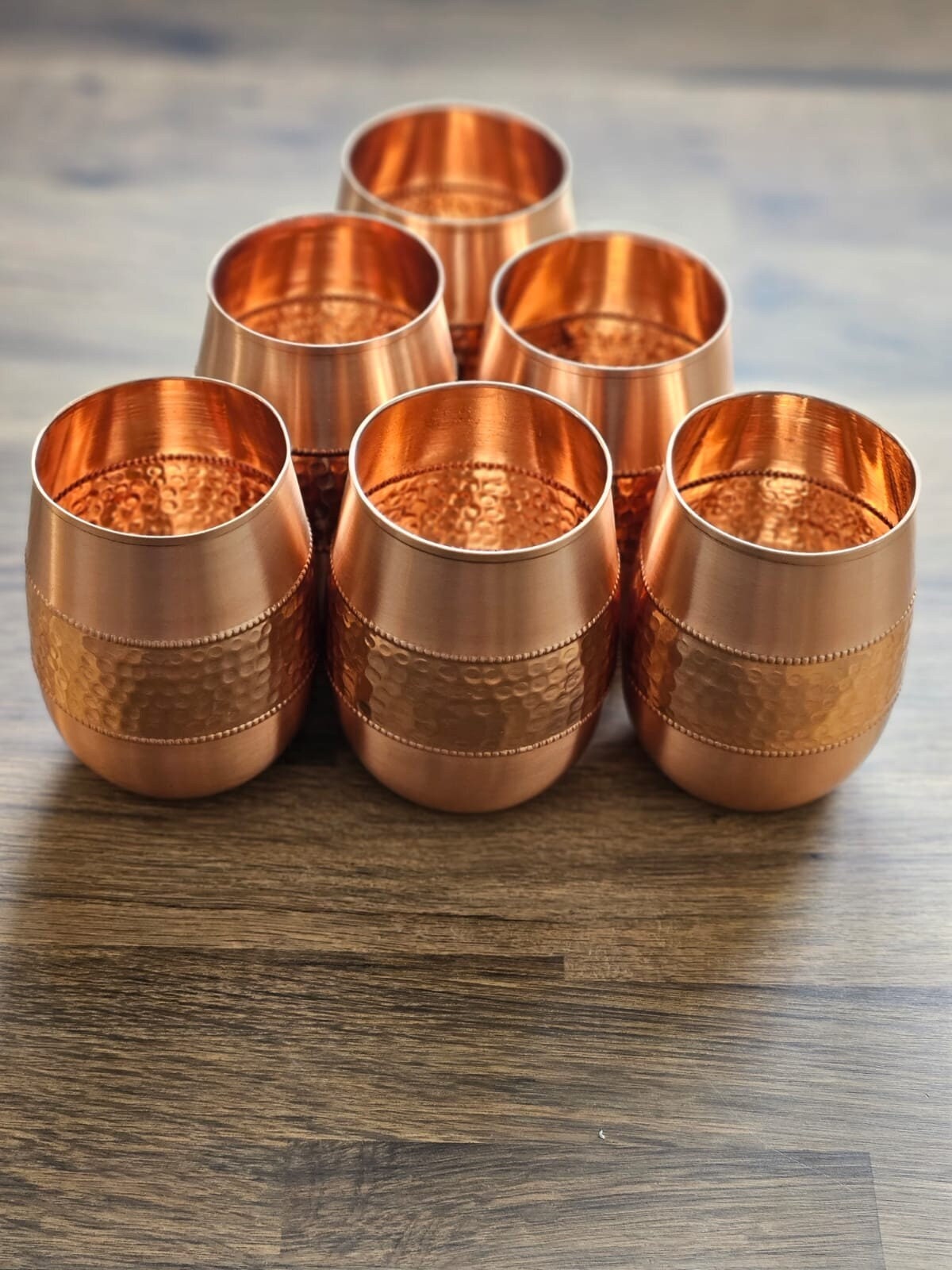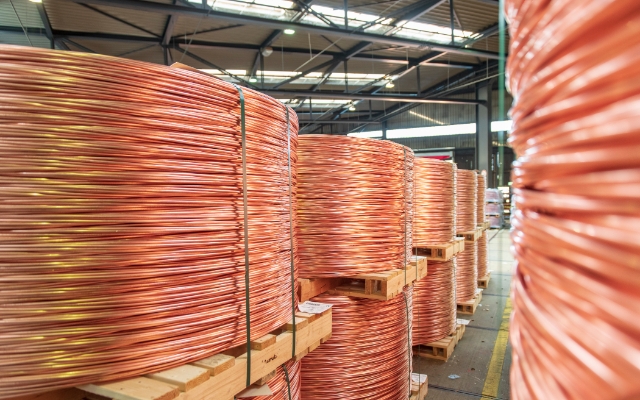How to Choose the Right Copper Products for Your DIY Projects and Home Renovations
How to Choose the Right Copper Products for Your DIY Projects and Home Renovations
Blog Article
How Copper Products Add To Lasting Practices in Various Industries
Copper items are increasingly recognized for their significant contributions to lasting techniques throughout numerous sectors, driven by their integral homes such as effectiveness, recyclability, and toughness. In renewable energy systems, as an example, copper improves the capability of solar and wind modern technologies, while its application in construction minimizes waste through long life. The material's antimicrobial attributes supply promising advantages in medical care setups. As industries look for to take on even more sustainable practices, the function of copper can confirm critical in attaining ecological objectives. What implications might this have for future developments in sustainability?
Copper in Renewable Resource
Copper plays an important role in the improvement of sustainable power innovations, acting as an essential conductor in numerous applications. Its extraordinary electrical conductivity and resistance to corrosion make it an excellent product for electrical wiring, which is crucial in solar panels, wind generators, and energy storage systems. In solar photovoltaic or pv systems, copper is utilized in the interconnections and wiring, making it possible for efficient energy conversion from sunlight to power.
In wind energy, copper is essential to the generators and transformers that transform kinetic energy into electrical power, guaranteeing ideal efficiency and integrity. The need for electric automobiles (EVs) is enhancing, with copper being a crucial part in batteries, electric motors, and billing infrastructure. The transition to EVs dramatically improves the demand for copper, as these cars generally make use of 4 times more copper than traditional internal burning engine lorries.
As the world looks for to alleviate climate adjustment and transition to sustainable power resources, copper's duty ends up being progressively important. The product not only enhances the effectiveness and resilience of renewable resource systems however also sustains the wider objective of lowering greenhouse gas discharges and promoting a sustainable future.
Eco-Friendly Building Materials
In recent years, there has actually been a remarkable change in the direction of the fostering of eco-friendly building and construction materials in feedback to expanding ecological concerns. This modification is motivated by the demand for lasting alternatives that reduce ecological footprints while keeping structural stability and aesthetic allure.
Copper, recognized for its toughness and recyclability, has actually become a principal in this sector. It can be utilized in roofing, plumbing, and electrical systems, adding to power performance and decreasing waste. Copper's durability suggests fewer replacements over time, additional improving its sustainability profile.
Additionally, products such as bamboo, redeemed wood, and recycled steel are gaining popularity. These alternatives not only provide minimized environmental effect however additionally promote resource preservation. As developing codes increasingly emphasize sustainability, designers and contractors are incorporating these products right into their jobs, promoting advancement in layout.
The boosting adoption of green building materials shows a wider commitment to sustainability in the constructed environment. By prioritizing these products, the building market can dramatically reduce its carbon footprint, line up with governing criteria, and sustain a healthier community for future generations. This trend marks an essential action towards a much more sustainable future in construction.
Copper's Role in Medical care
Recent researches have actually highlighted the substantial duty of copper in healthcare setups, especially as a result of its antimicrobial homes. Copper surfaces have actually been shown to reduce the existence of pathogens, consisting of microorganisms and viruses, by approximately 99.9% within a short period. This impressive efficiency makes copper a very useful product for high-touch surfaces in hospitals, such as doorknobs, bed rails, and IV posts, thus adding to boosted infection control procedures.
Along with its straight antimicrobial impacts, copper likewise contributes in the more comprehensive context of medical facility sustainability (Copper Products). By integrating copper into medical devices and furnishings, medical care centers can minimize the occurrence my site of healthcare-associated infections (HAIs), which not just improves patient end results but likewise reduces the prices connected with extended medical facility remains and extra therapies
Additionally, copper's toughness and recyclability align with lasting methods, allowing for liable source administration. As healthcare systems increasingly focus on both person safety and ecological stewardship, the integration of copper products is coming to be more prevalent. This twin advantage emphasizes copper's essential payment to a healthier, more secure, and extra sustainable healthcare environment.
Sustainability in Transport

Furthermore, copper's resilience and rust resistance add to the longevity of transportation facilities (Copper Products). In rail systems, for circumstances, copper components improve the integrity and effectiveness of signaling and power systems, necessary for reducing hold-ups and power consumption. Furthermore, copper's role in renewable resource systems, such as solar and wind, supports lasting transport options by giving tidy energy for electric transportation options
Investments in copper modern technology not just foster sustainability but likewise promote financial development and work development in environment-friendly sectors. As industries strive to meet strict environmental policies, the application of copper products in transport becomes a crucial method in accomplishing sustainability my sources objectives and promoting a cleaner, more reliable future.
Copper and Round Economic Climate
As the globe progressively accepts sustainability, the function of copper in the circular economy becomes ever before much more considerable. Copper's inherent residential properties-- such as its recyclability, durability, and conductivity-- placement it as a key product in a resource-efficient economic climate. The circular economic situation intends to lessen waste and take full advantage of resource usage via recycling and reusing products, and copper excels in this regard.
The metal can be reused indefinitely without loss of high quality, making it an ideal candidate for lasting methods across numerous fields, including construction, electronic devices, and eco-friendly power. By reprocessing and recuperating copper from end-of-life items, markets can dramatically minimize the need for virgin products, thus lowering ecological effects related to mining and handling.
In addition, the assimilation of copper into round economy structures not just saves sources however additionally promotes innovation. Services that prioritize copper reusing contribute to an extra sustainable supply chain, boosting their competitiveness while lining up with governing demands and customer choices for ecologically liable products.
Final Thought
Finally, copper items substantially add to lasting techniques throughout numerous industries. Their essential role in improving renewable resource technologies, advertising environmentally friendly building materials, sustaining infection control in healthcare, helping with sustainable transportation, and embodying the concepts of a circular economic situation emphasizes the versatility and relevance of copper. By incorporating copper right into different applications, markets can attain better performance, lower environmental impact, and line up with global sustainability objectives, inevitably cultivating a more sustainable More Help future.

Copper's outstanding conductivity makes it a preferred material in electric automobile (EV) systems, boosting energy performance and efficiency. Additionally, copper's role in renewable power systems, such as solar and wind, sustains sustainable transport remedies by offering tidy energy for electric transportation options.
Their necessary function in enhancing eco-friendly power innovations, promoting eco-friendly building and construction products, sustaining infection control in medical care, assisting in sustainable transport, and symbolizing the concepts of a circular economic situation underscores the versatility and value of copper.
Report this page